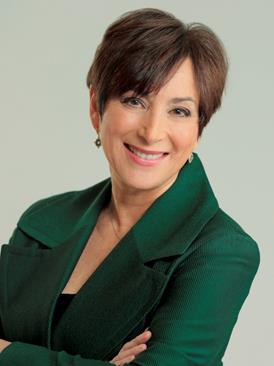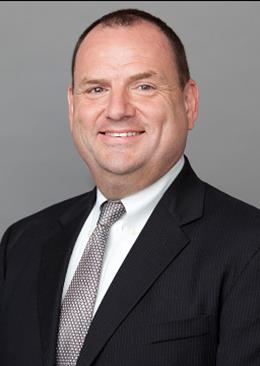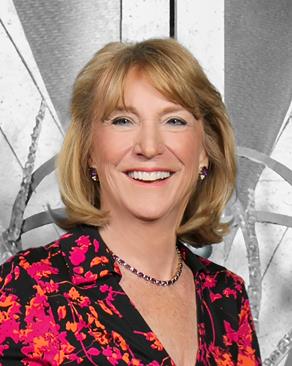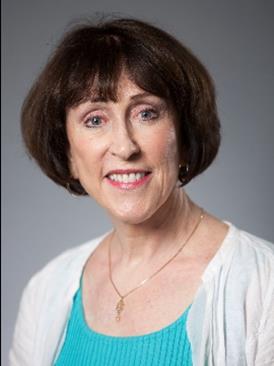All on Board
The Art and Science of Recruiting Trustees
“You can never overestimate the importance of the board,” says Deborah Sandler, general director and CEO of Lyric Opera of Kansas City. Like many opera-company administrators, Sandler has learned that the people who sit around the board table are as important to an opera company’s health as the people who occupy its administrative offices. The board’s vital role makes the job of identifying and recruiting new trustees a supremely important one — a process that may in fact shape a company’s future.
The issue of who sits on a board has taken on an added measure of sensitivity as companies address the challenges of producing opera in our era. “Company leaders need to think strategically about all the things they need in their trustees: their skills, their spheres of influence and diversity in every dimension,” says Marc A. Scorca, OPERA America’s president and CEO. “In order to be of the community, the opera company has to give up some of the old-fashioned social constructs that are associated with board service.” Holly Mayer, board chairman of The Dallas Opera, refers to this historical shift as a transformation from a “club model” into a “business model.”
“Having board members look around and finding [only] people like themselves,” says Cathy Adams, chairman of The Atlanta Opera’s board, “is not going to sustain us going forward.”
Although the word “diversity” most generally has a racial connotation, that is only one element of the range of characteristics that a 21st-century opera board must possess. A healthy board will represent a range of professional skills, spheres of influence, geographic areas and ages, all geared toward turning the board into an effective, energetic community force — one that can sustain the opera company as it moves into the future. “We have a matrix we look at: Who’s on the board and what fields are they involved with?” says Sandler. “Then we look for areas we need to develop further.”
“You have to recruit thoughtfully,” says Bruce Thibodeau, president of Arts Consulting Group. “What advice do you need? What connections? I used to run an organization where you’d look around the table and everybody was lawyers or their spouses. Why would you need that?”
Drawing on his own experience in advising boards, Scorca urges a close look at the social and economic forces that shape a company’s region. “What are the drivers in the city?” he asks. “If I were building a board for an arts institution in New York City, for instance, I’d want to make sure we had someone from the real estate industry, someone from financial services, someone from educational institutions, someone from the tech industry. I’d want people from the boroughs represented, from various suburbs, all of them bringing different sensibilities and points of view. I would need board members who will open doors for me — whether it’s at a university or at the largest hospital in the city. What are the driving industries where I hope our opera company will have an entrée?”
Enlisting board members with diverse professional profiles widens the kinds of expertise available for board operations “You may need someone with a legal background, or a community-relations background, or a fundraising background,” says Dory Vanderhoof, partner in the arts-consulting firm Genovese, Vanderhoof and Associates. “You want people on a board with a deep knowledge of opera; people who are familiar with human-resources; people skilled at thinking about diversity; people who are good handling special events,” Scorca says. “You may want people who don’t necessarily have an affinity for opera, but are brilliant thinkers about community development, or futurists who can inform us about where this world is going — the world in which we wish to be successful purveyors of opera.”
Perryn Leech, general manager of Houston Grand Opera, points to Anna Catalano, former global head of marketing for BP, as a trustee who has diversified his board’s makeup, bringing significant professional assets to its operations. Her expertise has allowed her to chair — and overhaul — the marketing and communications committee. It has also helped the company make new connections to people within her professional sphere. “Building partnerships is difficult,” Leech says. “When you just knock on the door and say, ‘Hey, I’m Perryn,’ they look at you like you’re mad. But someone who’s a leader in that world can help you reach people you never would have had access to.”




Needless to say, racial and ethnic diversity has become a huge priority for many opera boards. As companies seek to expand their reach toward new audiences and into new communities, it becomes increasingly important that their boards start reflecting a wider range of ethnicities and ages. “Houston is statistically the most diverse city in the U.S., and our board is starting to look that way,” reports Leech. “Building the board has to be about sustainable growth. When people look at our trustees, we want them to think, ‘Here’s an organization that serves the whole city.’”
But he admits that “it’s not an easy fix.” One problem is proven philanthropists from underrepresented populations generate intense competition among nonprofits. “They tend to be courted by everybody,” Leech says.
Another stumbling point is that some boards expect a set minimum donation from their members: a requirement potential trustees who bring ethnic and age diversity may not necessarily be in a position to fulfill. The Atlanta Opera is considering a relaxation of its contribution guidelines, but the process is politically fraught. “Achieving our diversity goals is a must-do,” says Cathy Adams. “The challenge is, how do you sync that up with standards of annual giving, and how much flexibility should you show? It’s very difficult to quantify that. But we have to be resourceful as we design our requirements going forward. We have to imagine ways to place values on assets that may not be financial, but that our board requires to carry out our mission.” Scorca feels that the inclusion of people from differing economic strata shouldn’t merely be a concession, but a positive goal. “A level of economic diversity is important,” he says, “because it doesn’t make sense to have only one group of people make decisions about community-service strategies, ticket pricing and other important elements.”
Rather than imposing a set figure, Scorca believes, a board should require its members to donate in line with their own economic resources. “Every board gift should be individually negotiated,” he says. “Board members need to be equal in their relative generosity — relative to their ability to give. There are many people for whom a $10,000 or $5,000 gift is very significant in their philanthropic lives. They may bring important community connectedness, important points of view, and diversity in terms of age or skill or race. Board members should all make the company a philanthropic priority, but we have to give up the idea that we socialize around the board table only with people who give $25,000 or $50,000 annually.”
“We ask potential board members, ‘Is HGO going to be your philanthropic priority?’” says Leech. “You have to look at the makeup of the entire person. It’s the difference between someone who gives a big check, but who won’t really be involved in board work, or someone who gives a small gift, and is worth their weight in gold.”
No question: The intense fundraising demands of an opera company may well make it the most demanding of board assignments, a factor that makes recruiting new members an especially demanding process. “You really have to recruit,” says Bruce Thibodeau. “At one time, there might have been three or four arts organization in a typical city, along with three or four social-service agencies. Now, the figure is more like 30 or 40, and they’re all targeting the same people.” The job of identifying candidates ideally includes the expertise of a company’s development department, often working in tandem with its general director. Staffers should be able to work up full profiles of potential candidates: their philanthropic history, their fundraising acumen, their commitment to the art in general and opera in particular. The profiles are intended to provide the board not with counsel, but simply with the information needed to make an informed decision.
Effective research can help uncover surprises: the phenomenon of candidates who may seem attractive on the surface, but in fact will probably not make a good fit for the opera board. “There are people in many communities that everyone wants on their board,” says Margaret Genovese of Genovese, Vanderhoof. “But if you look deeper, you might find out that the person is overworked and just doesn’t have time for the opera company. Or, if your development director is in touch with other arts development people, you might discover that the person’s reputation for philanthropy is all smoke and mirrors.”
A good place to look for potential candidates is among people who have already demonstrated an allegiance to the opera company. They’ve bought subscriptions; they’ve given donations; they’ve helped organize galas. No matter how they’ve been identified, enticing potential members onto the board is often a courtship process involving invitations to operas and other company events, as well as getting-to-know-you meals with nominating committee members and the general director.
A tactic that The Atlanta Opera has used for bringing candidates into the fold is to get non-board members involved in board activities. For instance, it has invited a local business exec -- a man with significant experience on other nonprofit boards -- to monitor the implementation of its newly approved strategic plan. “I had lunch with him; he reviewed our plan and offered a lot of insights,” says Cathy Adams. “He’s not looking for any more board slots, but in a couple of years, he may well be. When you cultivate people, if it works well, they won’t be surprised when you ask them to join. We’re confident they’ll say ‘yes’ because they’re invested in us already.”
In quite a few instances, boards have instituted written guidelines that spell out the role and responsibilities of the trustees. These not only provide present members with a clear sense of their duties; they aid in recruitment by letting candidates know what the job entails. “Some organizations have a lack of clarity about what the rules and responsibilities are,” says Thibodeau. “You have to tell them: ‘These are our expectations for contributions and participation.’”
“It’s important to let them know what they’re getting into,” says Carol Lazier, board chairman at San Diego Opera. “I had an absolutely fabulous board member who had her own business, and when she came to the board she said, ‘I had no idea of the time commitment!’ What we learned from that is that we didn’t sit down with her and explain beforehand.”
Apathy is anathema in board work: The demands on time and attention, as well as money, are simply too intense. “The most important element of a great board is that the members have to be able to develop a passion,” says Dory Vanderhoof. In other words, a board candidate must be able to show, beyond a financial commitment, a willingness to work. “A board is not just a collection of checkbooks,” Scorca says. “The fundraising piece is an important piece, but a board seat is not a donor perk. Being a trustee means you’re entrusted with the well-being of the company.”
This article was published in the Spring 2017 issue of Opera America Magazine.

Fred Cohn
Fred Cohn is the former editor of Opera America Magazine.





